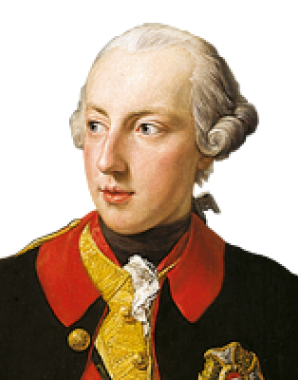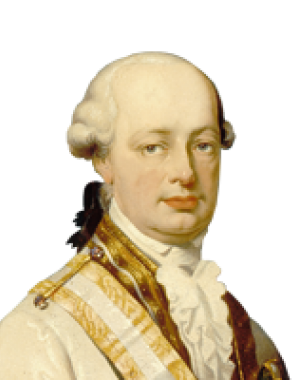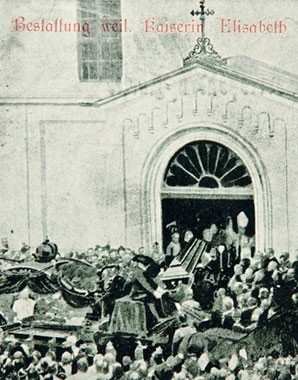Maria Theresa’s final years: widowhood and death
The sudden death of her husband in 1765 in Innsbruck, where the imperial family was staying to celebrate the marriage of Archduke Leopold and Luisa of Bourbon-Spain, was a severe shock to Maria Theresa and was to have an enduring effect on her life and personality.
Maria Theresa’s immediate reaction to the death of Franz Stephan was one of profound grief. From then on she appeared in widow’s weeds, cutting her hair short and wearing a widow’s veil. She observed the Catholic Church’s catalogue of virtues for widows, which required the renunciation of worldly pleasures. Pomp and circumstance were not deemed becoming for a grieving widow. In her youth Maria Theresa had been all for courtly amusements; now she was transformed into a priggish matron.
The main purpose of her life became the preservation of Franz Stephan’s memory. She developed a veritable cult of grieving focused on her late husband. After her death a scrap of paper was found in her prayer book on which she had calculated the exact duration of her marriage: ‘29 years, 6 months, 6 days; that makes 29 years, 335 months, 1540 weeks, 10,781 days, 258,744 hours’.
The grieving widow withdrew increasingly from public life, becoming a myth in her own lifetime. However, in the background she still retained her firm grip on the reins of power. Although she made her eldest son, who as Joseph II had succeeded his father as Holy Roman Emperor, co-regent of the Habsburg Monarchy, she remained the determining element. This constellation is unique in the history of Habsburg rule.
The joint regency was marred by the difficult relationship between mother and son. Maria Theresa’s disposition became increasingly conservative, and she had lost much of her earlier vigour. Her fundamentally pessimistic attitude made her fear that her life’s work was being endangered by her son’s plans, and she thus opposed many of Joseph’s reforms. She saw herself as a steward of her realm, with a sense of what was actually possible, something that the ‘revolutionary on the imperial throne’ in his reforming zeal at times appeared to lack.
Joseph on the other hand felt that he was being confined in his actions by his ageing mother. He criticized the conservative opposition within the family that centred on Maria Theresa. He mockingly described the Viennese court as a ‘henhouse’, an assemblage of a dozen old women, three or four old maids and twenty young girls who are called ladies of court. Seven archduchesses, an empress, two archdukes and one emperor all live under the same roof. Nonetheless there is not a trace of companionship, no sensible or pleasant point in common. Each tries to win the other over to his side. Gossip, the tormenting of one lady by another, of one archduchess by another, is confined to a “Would you believe it?”
Increasingly the empress’s age began to make itself felt. We have a description of the ageing Maria Theresa written by her son Leopold, who visited his mother in Vienna in 1778. Her health was comparatively good for her age, although owing her age and her corpulence she is beginning to have great difficulty in walking; she starts breathing very heavily as soon as she walks or moves, and since she is embarrassed about this and tries to walk very quickly, she becomes ever more bad-tempered and disconsolate. Her memory has deteriorated considerably and she fails to remember many things or orders she has given, frequently repeating herself, which creates much confusion. She is starting to become somewhat hard of hearing (...) She has qualms about many things and constantly mistrusts herself and everybody else. She never enjoys anything and is constantly alone and melancholic, as she never has company and is always fretting about everything.
Maria Theresa died of pneumonia in the Vienna Hofburg on 29 November 1780. In her last hours she wore her beloved husband’s dressing gown. She is buried in the crypt of the Church of the Capuchin Friars in Vienna, where the double sarcophagus of Maria Theresa and Franz Stephan of Lorraine forms a dominant focal point.

















